Fluffy, buttery, and ahh so delicious. Scones are the perfect baked good to accompany tea and taste amazing fresh out of the oven. Their tantalizing aroma brings to mind memories of watching Grandma pull a fresh batch from the oven and it brings the whole family flocking to the kitchen. My family loves scones of all kinds, like Irish Scones for example. They have a tender and buttery texture that tastes like a warm hug.
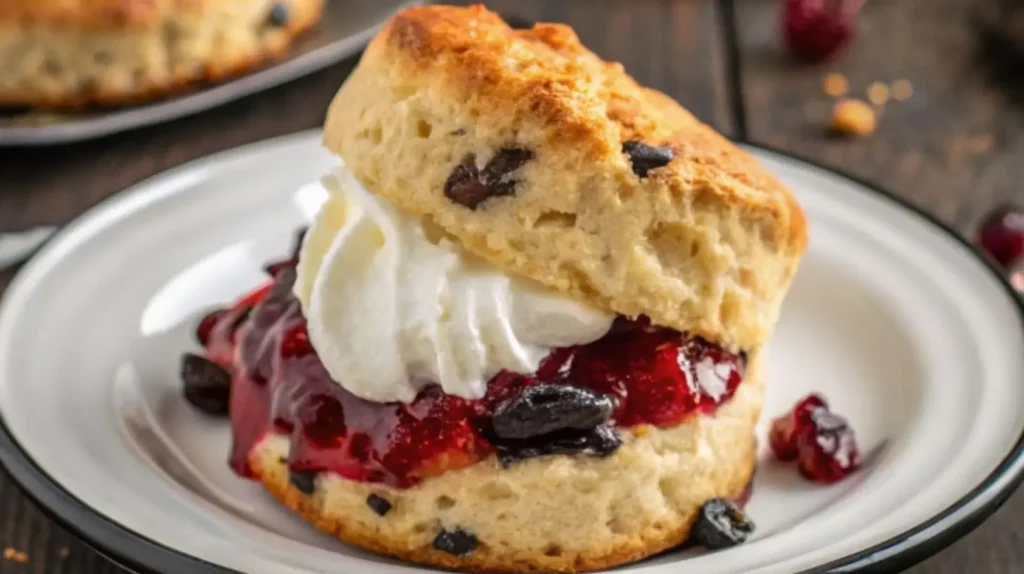
The sides can be enjoyed as is but with a healthy helping of jam and clotted cream, they truly come to live. Clotted cream and jam? Yes please! At breakfast, with afternoon tea or even as a snack, these scones fit perfectly anywhere. I can instantly feel the cozier vibe take over the room when these scones are served. My mouth is watering already!
With the perfect recipe for a warm batch of homemade scones champions set on the kitchen counter, all there’s left to do is grab a mixing bowl, preheat the oven, and get to baking!
— ❖ —
Quick Guide
— ❖ —
What Makes Irish Scones Special?
If you’re only used to the scones served in America, then you are definitely in for a surprise. Fluffy, light, and not as sweet, Irish Scones are coffee-shop cousins. Scones are somewhere in between a cake and biscuit; they are soft inside, but crispy and golden brown on the outside.
The trick? It’s in the method. While American scones are loaded with butter and sugar, Irish scones need no elaborate packing or layering. The butter is cut into the flour like you would do for biscuits, achieving those soft, flaky layers. Some buttermilk or whole milk helps in blending everything together. Everything else is brought together by a quick bake in a hot oven, giving them the classic rise.
Irish scones are ready in no time. Forget about complicated steps, fancy equipment, or elaborate methods; they only require some mixing, rolling, and baking.
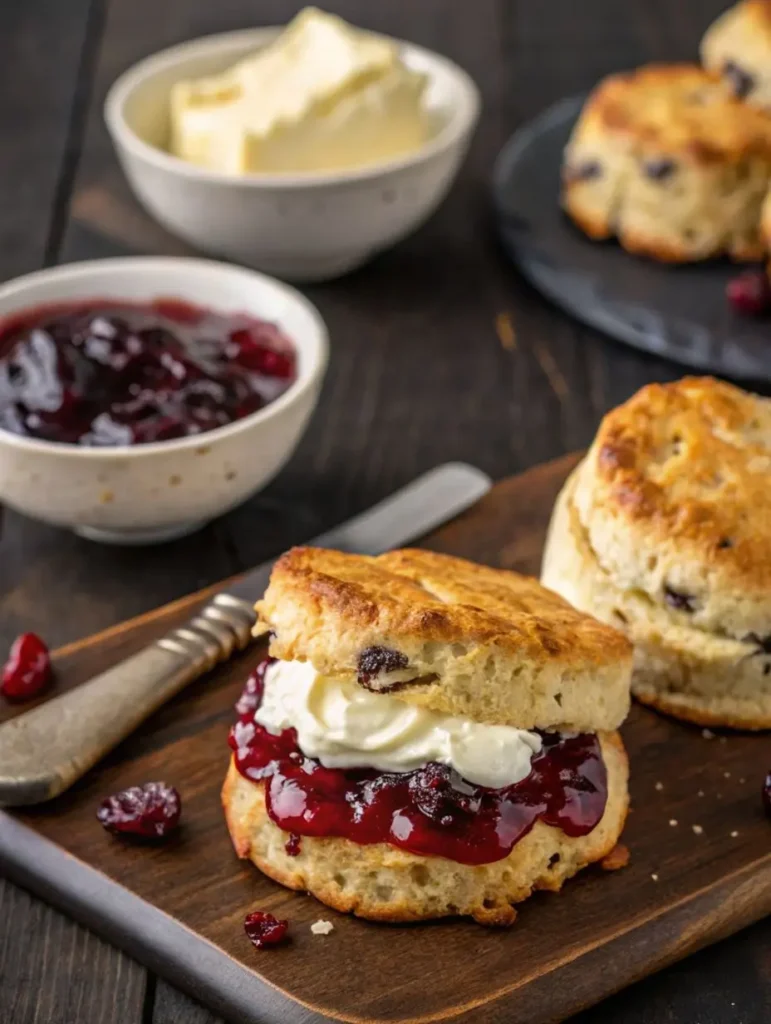
— ❖ —
Traditional Irish Scones Recipe
Okay, time to get into the juice of the matter! Depending on how you cut them, this recipe yields around 8-10 scones.
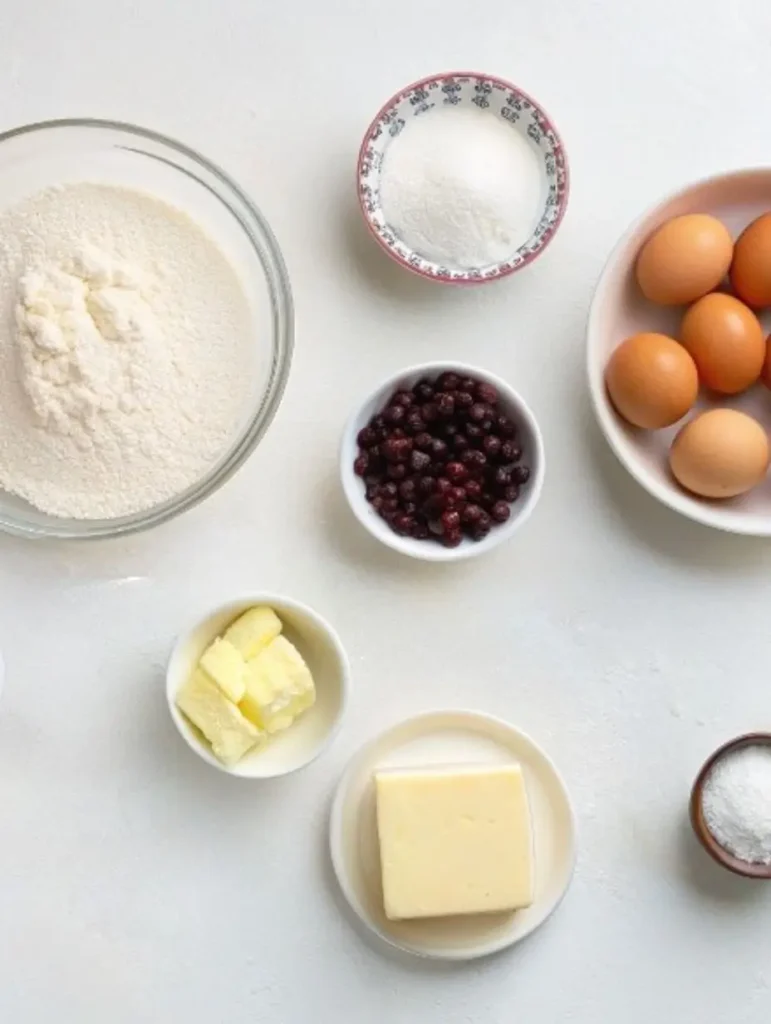
Ingredients:
- 3 ½ cups (450g) all-purpose flour
- 4 tsp baking powder
- ¼ cup (50g) sugar
- ½ tsp salt
- 5 tbsp (75g) cold unsalted butter, cut into small cubes
- 1 cup (240ml) whole milk or buttermilk
- 1 egg (for brushing)
Instructions:
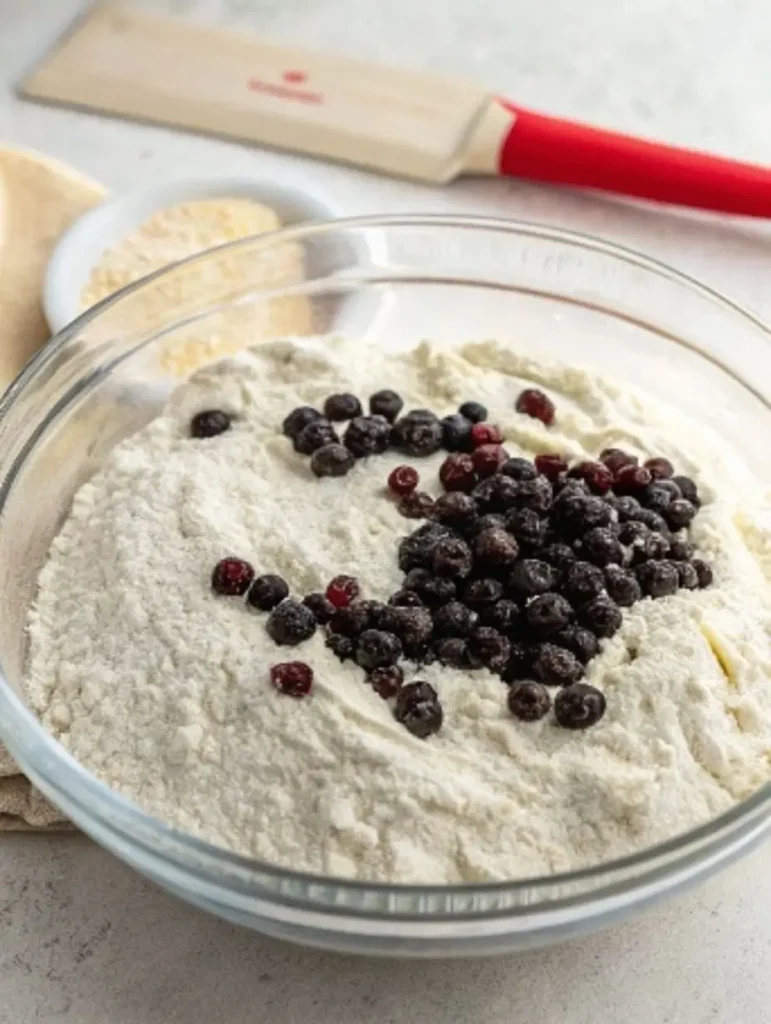
- Preheat the oven to 400°F (200°C). Line a baking sheet with parchment paper.
- Mix the dry ingredients. In a bowl, mix together the flour, baking powder, sugar, and salt. Whisk well.
- Cut in the butter. Use your fingers to lightly work the cold butter into the flour until it resembles coarse breadcrumbs. (This is crucial in getting that lovely crumbly texture!)
- Add the milk. While your milk is pouring in, mix with a fork until the dough is mildly combined. Be careful, overmixing is not recommended.
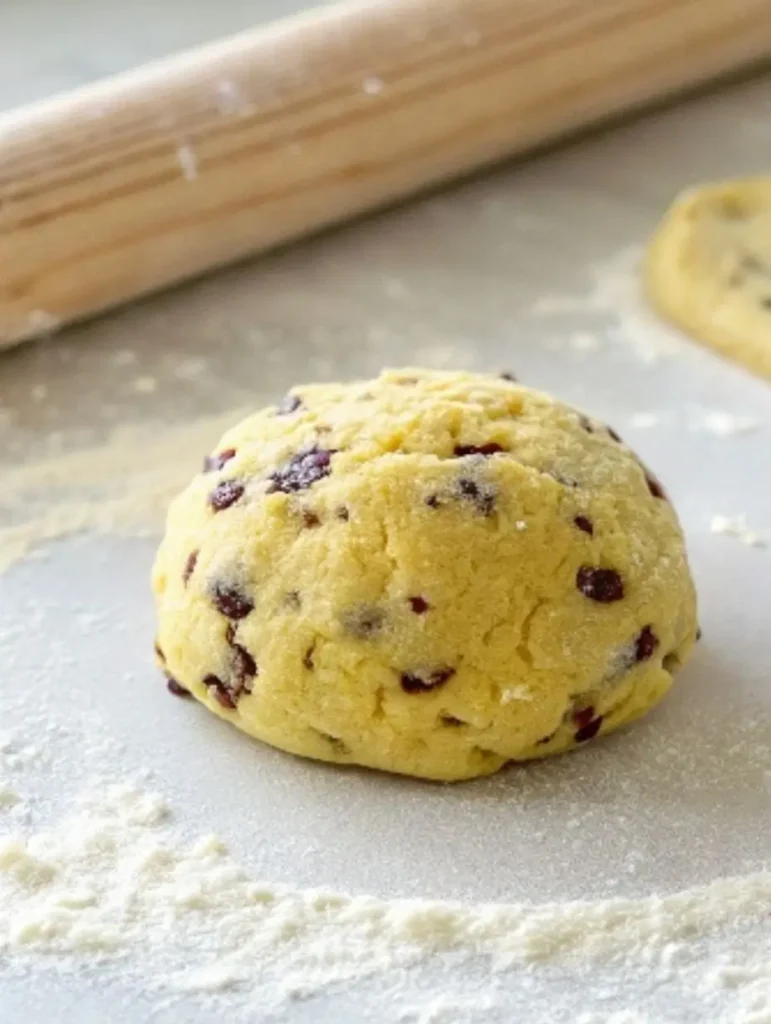
- Roll and cut. Put some flour on a clean surface then place the dough on it. Roll it out carefully until it’s approximately 1 inch thick. Slice it into circles, or just cut it into triangles.
- Brush and bake. Whisk the egg and then use it to brush each of the scone’s tops so they have that beautiful golden color. Bake for 12-15 minutes until lightly golden brown and risen.
- Serve warm! Spread some butter, jam, or clotted cream on them and dig in.
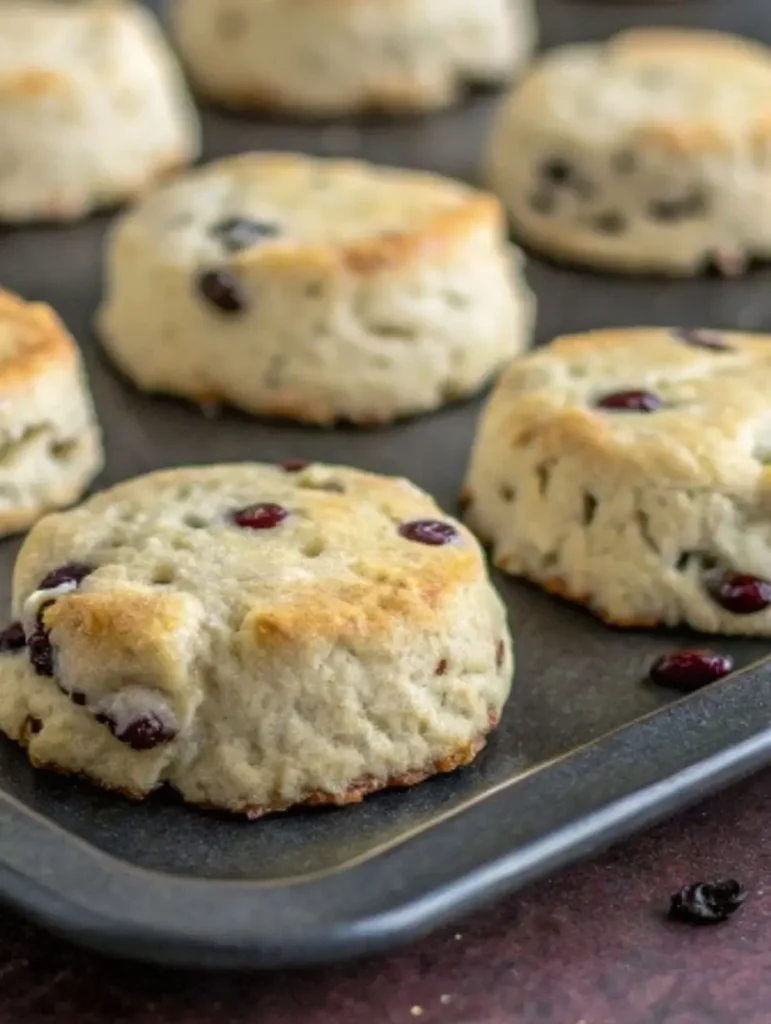
— ❖ —
How to Serve Irish Scones Like a Pro
For traditionalists, nothing beats a good scone with jam, but if you are looking to spice things up, here are some ways to enjoy them:
- With fresh whipped cream and berries – A fancy touch for brunch!
- Dipped in honey or golden syrup – For an extra sweet kick.
- Alongside a warm cup of tea – Because, let’s be honest, that’s how the Irish do it!
- Paired with a cozy dessert – (More on that below!)
— ❖ —
The Perfect Dessert Pairing for Irish Scones
Imagine a warm Irish Scone paired with a savory and comforting dish—utterly fantastic! That’s why I’m particularly excited to share with you this Best Eggs Cocotte Recipe we have thoroughly enjoyed lately.
Eggs Cocotte is simply a more sophisticated way of referring to baked eggs with cream and cheese, and other tasty goodies you may want to add which can include mushrooms, ham, or herbs. It’s comforting, rich, and decadent. Best paired with a freshly baked scone, it’s a game changer.
Pro tip: bake your eggs cocotte in a little ramekin until the yolks are just set, then grab an Irish Scone and use it to scoop the delicious cheesy dish. Breakfast’s wildest dreams have come to life.
Give it a go—it’s a game changer. Thank you later in advance.
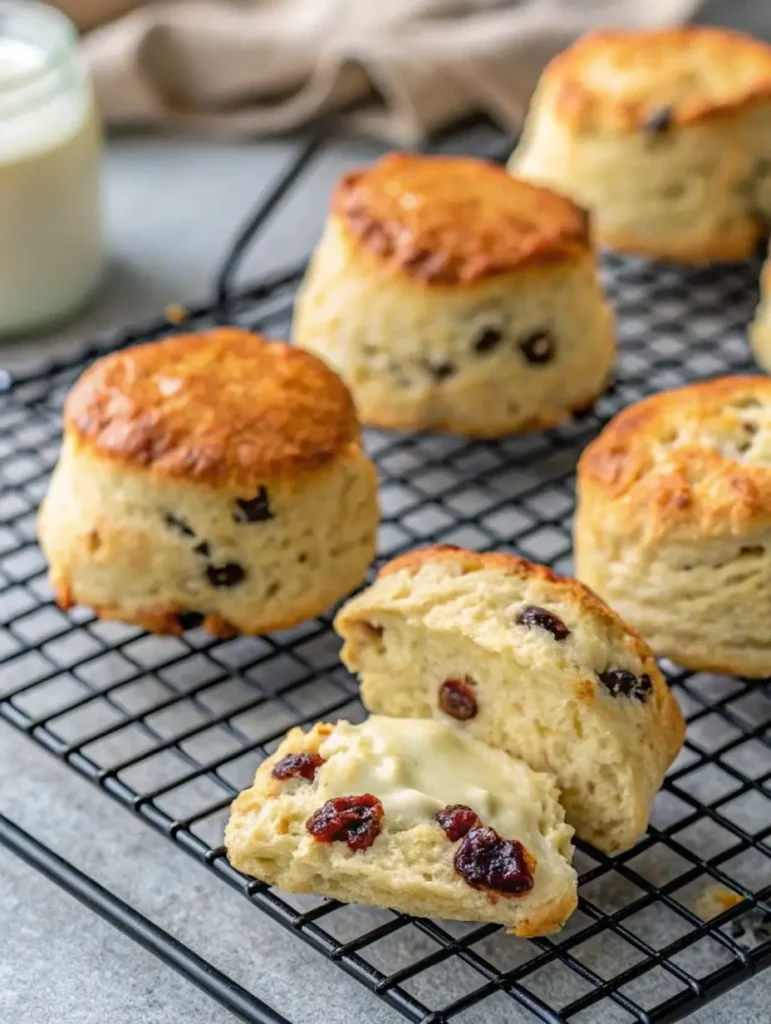
— ❖ —
Tips for the Best Irish Scones Every Time
Making Irish Scones isn’t hard, but a few tricks can take them from good to bakery-level amazing:
- Use cold butter. Just like with pie dough or biscuits, keeping the butter cold helps create that perfect flakiness.
- Don’t overwork the dough. Mix until just combined—overworking it makes the scones tough.
- Brush with egg wash. This gives them that shiny, golden finish.
- Eat them fresh! The finest quality Scones can be appreciated on the day of their preparation. However, in case you missed them, microwaving them for a few seconds will still get the job done.
— ❖ —
What is the Difference Between Irish and British Scones?
Thank you for asking! Both Irish and British scones may seem the same at first glance, but the texture, ingredients, and even serving customs differ quite a bit.
1. Texture & Crumb
- Irish Scones tend to be denser, slightly crumbly, and less sweet. They have a soft, biscuit-like texture but with a bit more heft.
- British Scones are usually lighter, fluffier, and slightly richer, thanks to a bit more butter and sometimes cream in the dough.
2. Sugar & Sweetness
- Irish Scones are typically less sweet and sometimes made with wholemeal flour, giving them a more rustic taste.
- British Scones have a little more sugar, making them taste slightly more like a treat even before toppings.
3. Fat Content
- Irish Scones use less butter than British scones, making them a little drier but perfect for spreading with lots of butter and jam.
- British Scones often have more butter or even cream in the dough, giving them a richer taste.

4. Serving Style
- Irish Scones are often eaten warm with butter and jam, sometimes alongside tea. Clotted cream isn’t as commonly used.
- British Scones are famously served with clotted cream and jam, especially in a classic afternoon tea setting.
5. Shape & Size
- Irish Scones are often thicker and slightly rougher in shape because they’re usually cut into rounds or triangles without much fuss.
- British Scones are often more uniform and round, as they’re traditionally cut with a biscuit cutter for that neat, polished look.
Each variation is delightful in its own way. If you prefer a richer and more structured scone, then Irish scones are perfect. British Scones are ideal for those looking for a finely textured sweeter snack. In both cases, butter and jam will make everything better.
— ❖ —
What do Irish People Call Scones
In Ireland, scones are called “scones” just as they are in Britain, but Americans can often expect differing degrees of variation. Some Irish people pronounce it like “skon” with a long ‘o’ and others pronounce it to rhyme with “bone.” Both are popular which makes differentiating through accents extremely reliable.
What’s more fascinating to learn is Irish scones are incredibly popular in cafes, bakeries, or homes. While in Britian, clotted cream is mandatory, the Irish serve their scones with butter and jam, which is equally delicious! Raisin and currant fruit scones exist alongside wholemeal brown scones as well.
So, the next time you plan to visit Ireland, step into an Irish bakery, enthusiastically say the word “scone” and enjoy a scone. Just make sure you’re prepared for the friendly argument of what the proper pronunciation is!
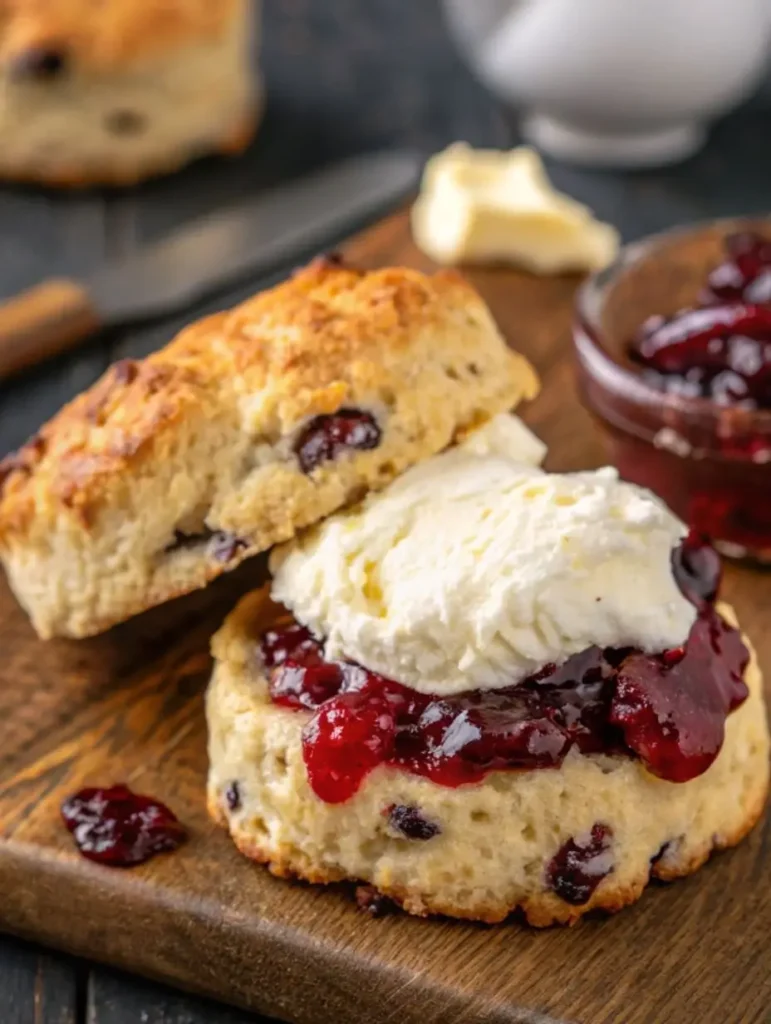
— ❖ —
Frequently Asked Questions About Irish Scones
1. Can I make Irish Scones ahead of time?
You’re in luck! The dough can be made in advance; simply cut out the scones and freeze them. Just pop them straight in the oven after thawing and add a few extra minutes to the baking time.
2. What’s the best flour to use?
While all-purpose flour does a good job, cake flour or a blend of both will make it softer.
3. Can I add fruit or chocolate chips?
Definitely! You can use some raisins, currants, or even chocolate chips for a change.
4. Why didn’t my scones rise?
Always check that your baking powder is fresh, and remember, don’t overwork the dough. Also, cutting them about 1 inch thick helps them puff up beautifully.
5. How do I store leftover scones?
Store in an air-tight container at room temperature for no more than two days. For long-term applications, freeze and reheat when necessary.
— ❖ —
Reader Feedback
Victoria S. “This mornign I prepared delicious irish scones and oh my gosh, they brought me right back to my granny’s kitchen! The sweetness wasn’t over board which was a delight, along with the texture. Butter and homeade raspberry jam was served with it and my family couldn’t get enough. I will be holding onto this recipe for sure!”
Adam G. “Making scones in the past has always ended in failure due to their overly dry outcome. This recipe, however, sounds different. This recipe was a game-changer for me! I’m glad you pointed out not to over-work the dough and to use cold butter. Those two tips helped immensely. “ I also took the liberty of pairing them with the Eggs Cocotte,” and it was incredible! You’re a genius! Keep it up and thank you for the recipe!”
Your comments mean the world to us! Have you tried these buttery and tender Irish Scones? Let us know in the comments below—we’d love to hear how they turned out for you! Your feedback helps us and everyone else who loves baking as much as we do.
Don’t forget to follow us on Instagram, Pinterest, and Facebook for more delicious recipes and kitchen tips. Happy baking!
— ❖ —
Lo and behold the recipe that is guaranteed to satisfy your cravings warmth and tenderness, here is the Perfect Irish Scones recipe. You can serve this recipe at breakfast, brunch, or as an afternoon tea snack and trust me when I say, you will not be disappointed.
While you’re at it, do not forget to pair the scone with that Best Eggs Cocotte Recipe. It is perhaps the best combination.
Until next time, happy baking! Let us know in the comments how your scones taste like because we adore hearing from you.

gmnbb0